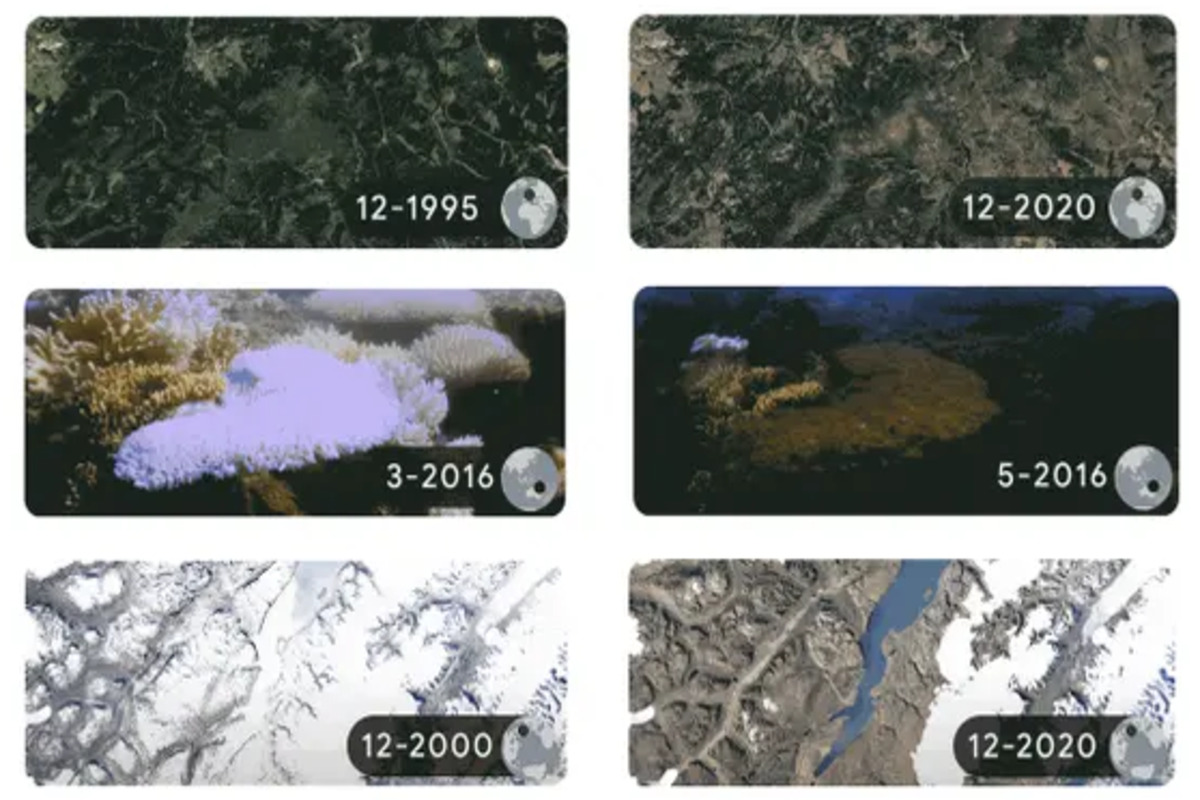For this Earth Day, Google is taking things in a different direction with an animated Doodle that sets aside delight and branding. On the Google Search homepage — as well as Chrome’s new tab page — people around the world will see one of four time-lapse animations, showing the incremental impact of climate change on a part of the world over months or years. Every few hours, Google will change to a different animation.
The first climate change animation to be shown on the homepage features Mt. Kilimanjaro in Tanzania, Africa. Over the course of December 1986 to December 2020, you can see the mountain’s glacier steadily and significantly shrink. Later in the morning, things will change over to an even more stark instance of glacier retreat occurring in Sermersooq, Greenland, between 2000 and 2020.
Advertisement
In the afternoon, things will switch to an animation of coral bleaching occurring near Lizard Island in the Great Barrier Reef across a year and a half. Coral goes through the process of expelling its algae — and therefore its color — in response to changes to the climate of the water, including the temperature, light level, and amount of nutrients.
The final animation will be of the Harz Forests in Elend, Germany, showcasing the forests destroyed by bark beetle infestation due to rising temperatures and severe drought from 1995 to 2020.









